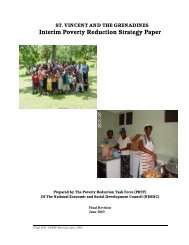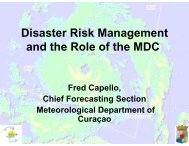The Anatomy of A Silent Crisis The Anatomy of A Silent Crisis
The Anatomy of A Silent Crisis The Anatomy of A Silent Crisis
The Anatomy of A Silent Crisis The Anatomy of A Silent Crisis
- TAGS
- anatomy
- www.bb.undp.org
Create successful ePaper yourself
Turn your PDF publications into a flip-book with our unique Google optimized e-Paper software.
<strong>The</strong> human impact <strong>of</strong> climate change – Already serious today 65<br />
Poverty can be a driver <strong>of</strong> practices that contribute to climate change. Black carbon from the<br />
soot released from cooking stoves is one example. Under-ventilated fireplaces and primitive cooking<br />
appliances not only have negative health impacts almost exclusively born by women, from smoke<br />
inhalation and respiratory illnesses, but also hurt the environment. While carbon dioxide is the number<br />
one cause <strong>of</strong> climate change — responsible for about 40 percent <strong>of</strong> warming — black carbon from<br />
soot is fast emerging as a large contributor to climate change, causing as much as 18 percent <strong>of</strong><br />
warming. 211 <strong>The</strong>se findings are so recent that they were not covered in the 2007 Intergovernmental<br />
Panel on Climate Change report. 65 Nevertheless, soot from fireplaces in tens <strong>of</strong> thousands <strong>of</strong> villages<br />
in developing countries is the primary contributor to black carbon. 212 Often those who depend on<br />
these cooking stoves to prepare staple foods do not have access to affordable alternatives.<br />
A solution <strong>of</strong> this difficult situation would also have a global benefit. Providing affordable alternatives<br />
could have a fast impact on curbing global warming, as unlike CO 2 which lingers in the atmosphere<br />
for years, soot only remains for a few weeks. 213







